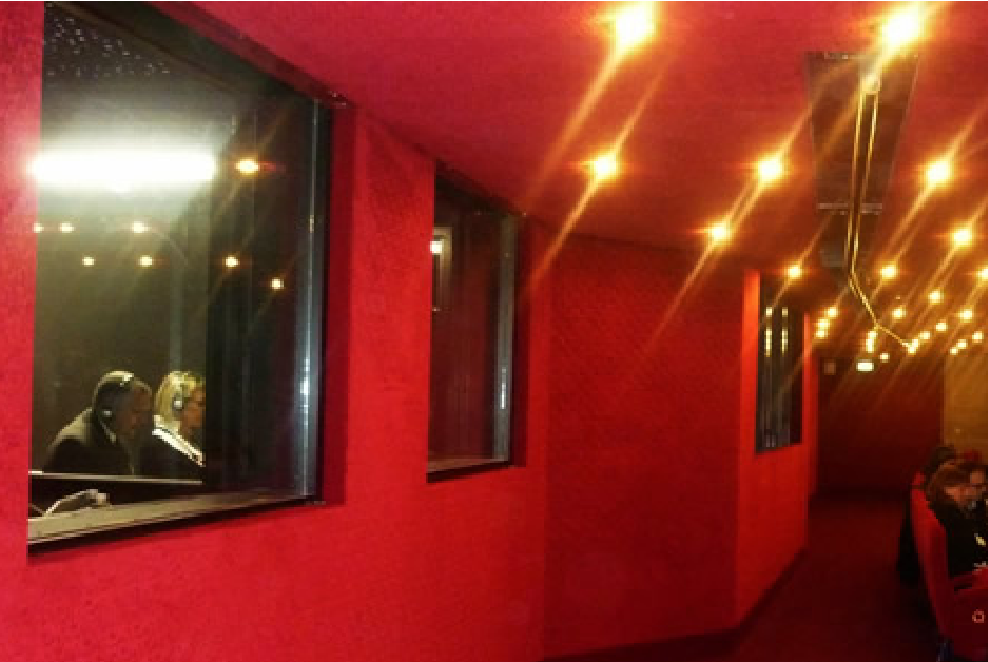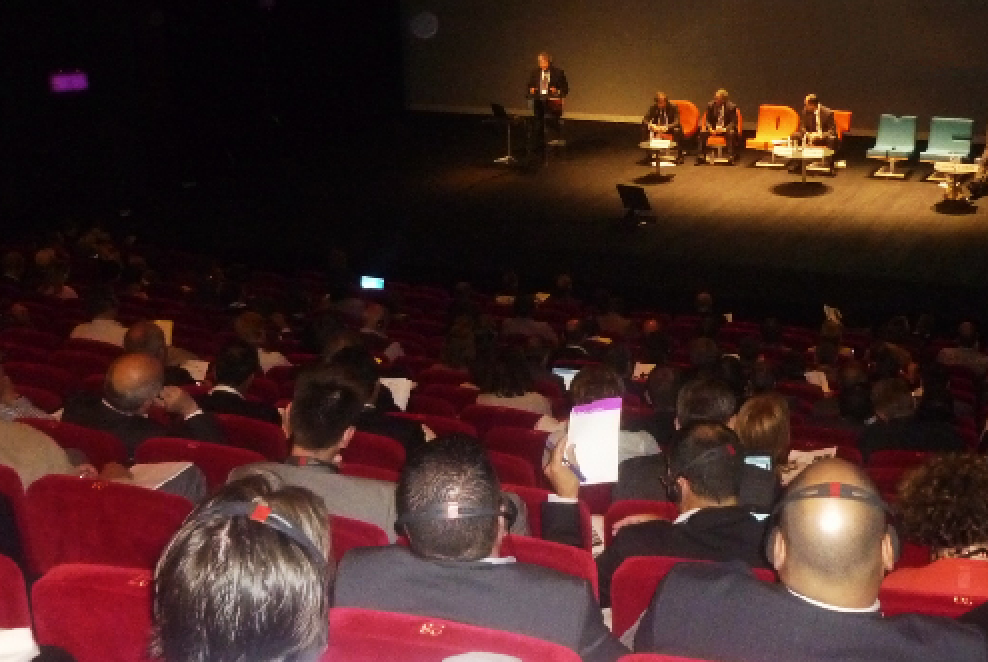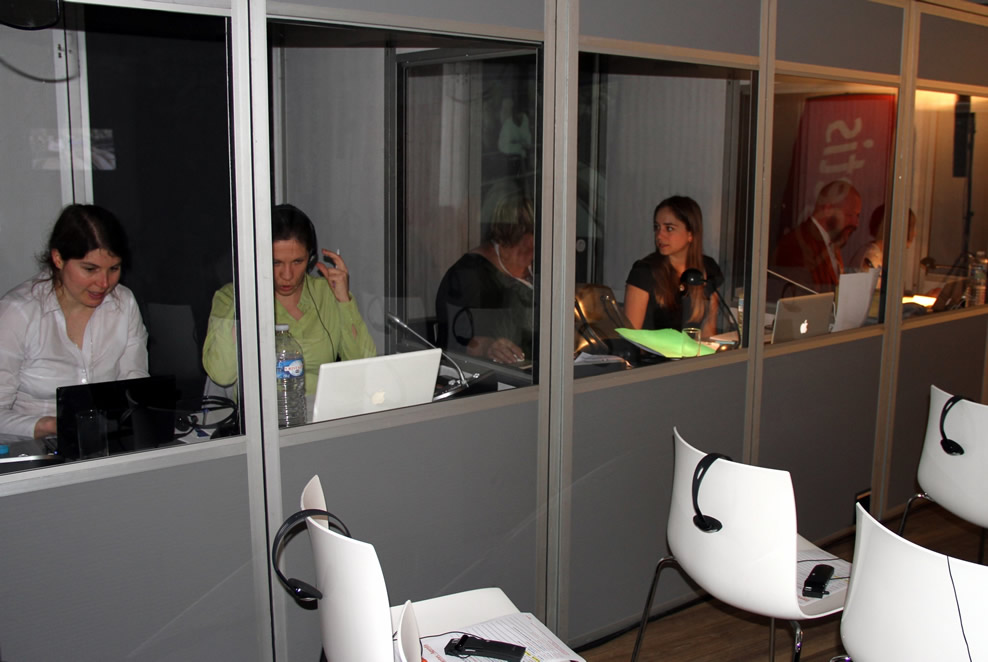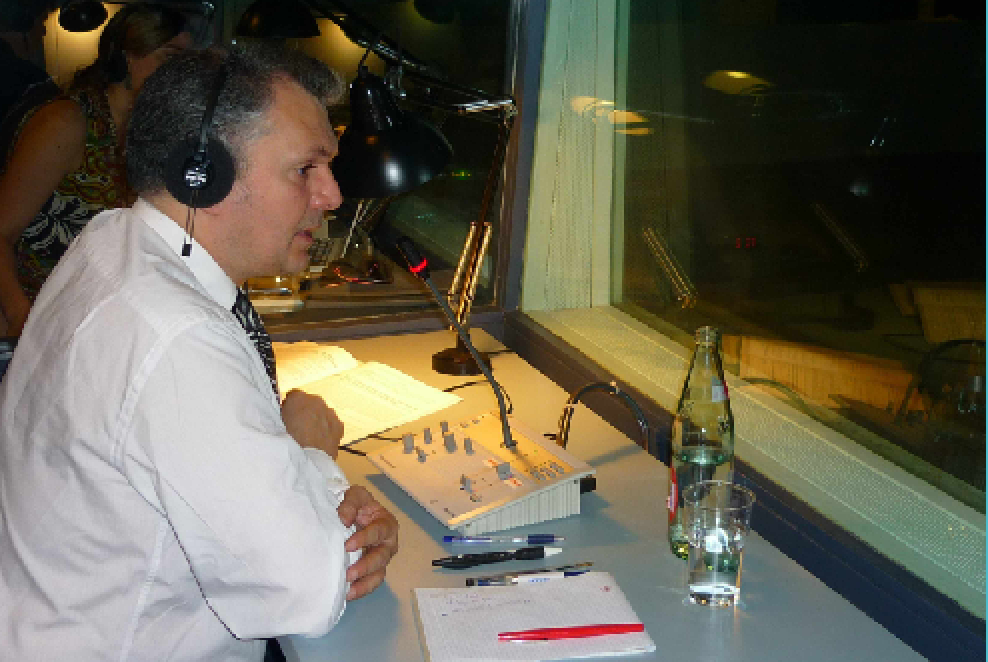- « The interpreter’s identity through the ages » (French)
by Henri van Hoof, FIT Committee for the history of translation, 1996 FIT-IBC award winner
- Interpreting techniques today
- Definition
The interpreter is the verbal intermediary between a number of individuals or groups that speak different languages. The interpreter translates into the target language the content, register, intention, and tone of statements made in the source language. The interpreter must be capable of accurately rendering all the connotations, nuances, touches of humour and emotions. The quality of the interpreter’s work does not only depend on linguistic skills, but also on cultural skills and specific economic, technical or scientific knowledge of the subject.
- Preparation of the assignment
It is important for the interpreter to have access to the documents required to prepare the assignment in advance, and in particular the complete programme or agenda, the biographies of the speakers or an organisation chart indicating the function of the speakers, their presentation materials or the common thread of the various speeches and, if possible, input about the previous or similar events. A glossary of acronyms and abbreviations is always very useful. The prior preparation and the documentation provided have a decisive impact on the quality of the interpreter’s work.
- Code of ethics and secrecy
Interpreters are committed to following a code of professional ethics, in particular with regard to confidentiality. They are required to respect total and absolute professional secrecy and to refrain from divulging any information that may come to their notice in the exercise of their profession during private and confidential meetings.
- Conference and liaison interpreters
A distinction is made between conference interpreter, who usually work in booths during international conventions, and liaison interpreters who take part in smaller and less formal meetings.
- Ways of working
The distinction is also made between two forms of interpreting:
Simultaneous interpreting
The interpreter talks at the same time as the speaker. The interpreters work in booths with a clear view of the conference room and the screen. They are connected to the participants by earphones and microphones, or they stand by the speakers and whisper their translations into their ear, or using mobile equipment known as a bidule in the trade.Consecutive interpreting
At regular intervals during the proceedings or at the end of a speech, the interpreter delivers in the target language a full or condensed version of what has just been said. The interpreter may have to take notes, especially if he/she only intervenes once the speaker has finished talking. In consecutive mode, the speaker must make pauses to allow the interpreter to intervene, which means that the speeches last twice as long as usual. In spontaneous exchanges, such as during training sessions for example, the reactivity of the participants is diminished. The simultaneous option makes the discussions much more fluid. However, in challenging negotiations, consecutive interpreting offers both parties the significant advantage of having time to reflect.- Equipment – methods
Conference rooms in large convention centres are usually pre-equipped with interpreting booths. If the venue does not have any fixed and permanent facilities, mobile booths can be installed. Mobile booths are made up of detachable parts that can be installed in suitable venues.
In whisper interpreting, the interpreter is seated next to one or two participants in a meeting and whispers the translation of what is being said to them. This option is used when only a limited number of persons requires a translation. This method is not recommended if more than two people need an interpreter, or if several interpreters have to work at the same time in the same room, for example one into Arabic and another into Russian, which would simply result in a cacophony that is as unpleasant as it is disturbing. In this case, the use of Bidule systems, working on different frequencies, is recommended.
A Bidule system is a mobile device that can be used for simultaneous interpreting without having to install a complete booth. The interpreter, who is not isolated from the rest of the room, is equipped with just a microphone and, sometimes, a headset. The participants are equipped with a mini-receiver and a headset or simple earphones. Using earphones means that the listeners remain in touch with the source languages through their free ear, while listening to the translation in the ear fitted with the earphone. In this case, the interpreters stand either close to the speaker, or in the background, and speak into the microphone without having to raise their voice. The drawback of Bidule systems compared with mobile booths, is that they do not allow for any noise isolation. The benefit is that they are mobile, allowing for movements with the audience, for example when visiting a factory.
- Special conditions
In order to deliver quality translations that demand close and sustained concentration, interpreters usually work in pairs (replacing one another every 20 or 30 minutes), and for no more than 2×3 hours a day. Larger teams are needed for longer sessions.
Interpreters generally work with audiences directly and immediately. No recordings must be made without their prior consent, even by the listeners. In certain exceptional cases, the interpreter’s channel may be recorded, provided that it is not used for commercial purposes, is not published on the internet and is not used in any way that may call the quality of the translation into question.
If any films are shown during the meeting, the soundtrack will only be translated if the script is given to the interpreters beforehand and if the sound arrives directly in their headsets.
It is important to inform the listeners of the different languages that are available on the various channels.
- Coordination
If more than a certain number of interpreters are taking part in the same event, the presence of a coordinating interpreter is essential in order to oversee the smooth delivery of the service. He acts as the intermediary between the organisers, the teams of interpreters and the sound and image engineers. He may also be called on to intervene directly with the moderators and participants. His role is to manage the teams and to cope with unforeseen technical or scheduling problems. It is frequently necessary to respond quickly to last-minute demands, such as the temporary assignment of an interpreter to an interview with one of the speakers, or any other situations requiring quick, efficient and controled action.
- Technical assistance
Specialist technicians are called in to install and dismantle mobile interpreting booths. In addition to the coordinating interpreter, the presence on-site of a maintenance technician is advisable throughout the conference. Essential for conferences lasting several days, maintenance technicians are also recommended for shorter sessions (1 day, half-day), especially when several booths are installed.
- Interpreters and translators
Some interpreters also work as translators. Translating and interpreting are two different jobs that require fundamentally different skills. Some interpreters are not translators, and most translators are not interpreters. Translators are specialised in the written language. By definition, they have a duty to reread their work. Interpreters are specialised in verbal communications, work in real time and without a safety net. Their work requires instant assimilation of knowledge, great ease of expression and excellent diction. The function also calls for interpersonal skills, combining expertise and professional behaviour (punctuality, neat appearance, courtesy, discretion, diligence, communication skills).
Unlike interpreters, most of whom work in two-way booths (also described as working in both directions), in most cases translators work only into their mother tongue. This condition, however, is not sufficient to guarantee the quality of the translation in the target language. First and foremost, perfect understanding of the source language is essential. In addition, it is not enough to be a “native writer” to have the writing skills expected of a good translator. Not everyone can really write their own language. For a text to read well, the task requires writing skills in the target language including, in addition to flawless spelling and syntax, high terminological accuracy and perfect command of style, including punctuation, as well as great thoroughness regarding typographical rules. This is referred to as translation-adaptation-localisation; localisation is the process of adapting content to a given region of the world that includes, beyond mere linear translation, adapting to the norms, culture and specific expectations of the target reader. A distinction is made between technical translators and scientific translators, literary translators and legal translators. Each of these four main families of translators is subdivided into multiple subcategories based on finer analysis corresponding to document types, thematic content and specific fields of knowledge.
A sworn interpreter who works for the courts, is a consecutive liaison interpreter specialised in legal matters and certified by the legal system of the country. The same distinction exists between sworn interpreters and sworn translators, two functions that do not necessarily go together.
In sight translation, the interpreter gives an oral translation of a text written in another language. The interpreter-translator works in situ, after having received and studied the text beforehand in order to prepare his/her assignment.










![Egyptian hieroglyphics(Top to bottom and left to right), a fishing boat and net, a straight arm, a roll of cable and a seated man, who receives the message in a foreign language (top) and then
translates it into his own language (bottom). [after Gardiner]](https://www.interlingua-events.com/images/images_frises/1-Hieroglyphe.jpg)











